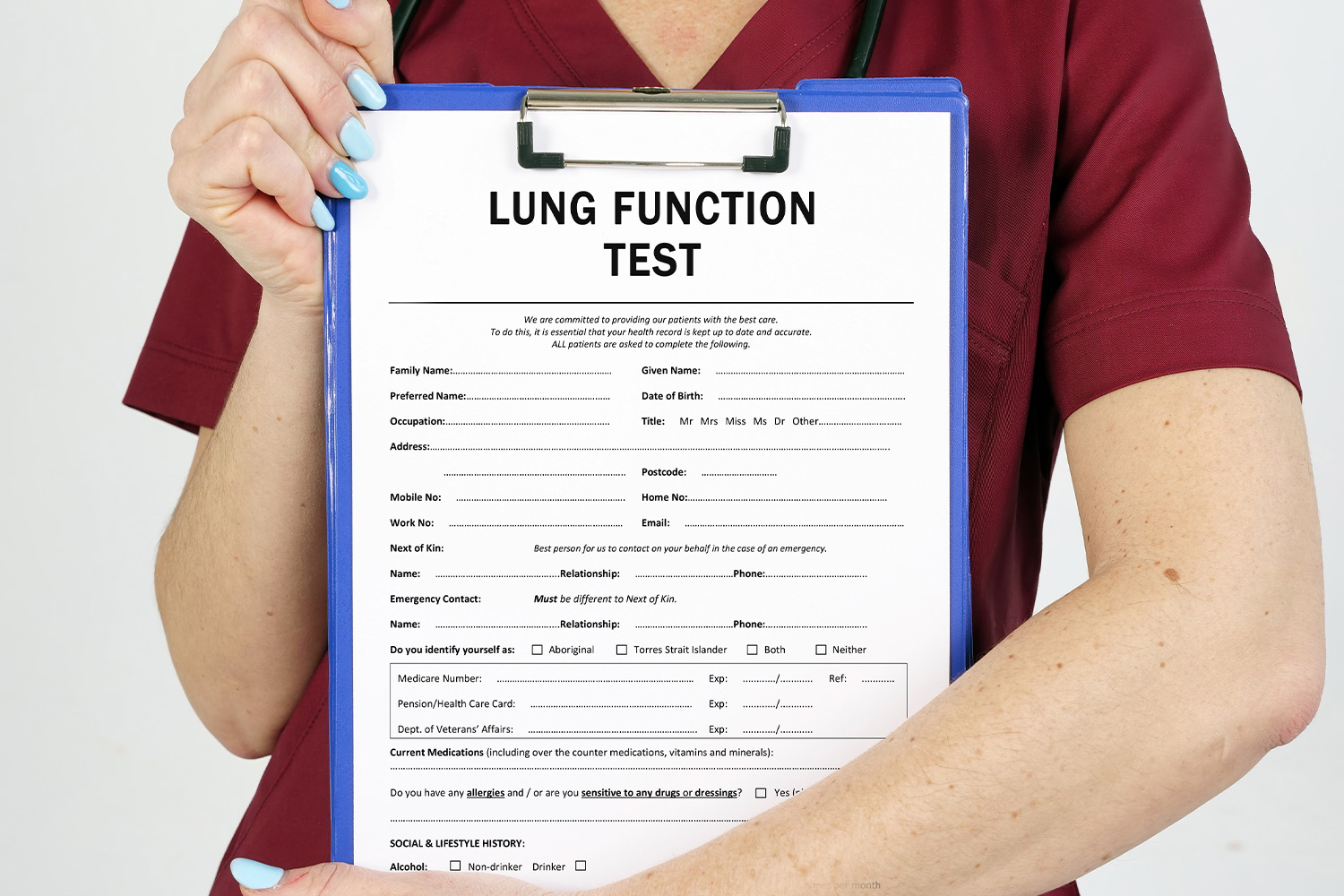
Many Veterans suffer from serious pulmonary or respiratory conditions after they leave active duty. Military life can often be hazardous, and military personnel exposed to burn pits in Iraq and Afghanistan, jet fuel, or other respiratory hazards may develop conditions like asthma, COPD, and bronchitis as a result of their exposure.
The VA recognizes the need for disability benefits for disorders that affect the lungs or other parts of the respiratory system. On this page, you’ll learn more about the VA pulmonary function test, how it is used to assign an accurate disability rating, and what to do if the VA denies your claim.
Pulmonary function disorders, also known as respiratory system disorders, are some of the most common disorders experienced by Veterans. These are disorders that affect the nose, throat, and other places in the respiratory tract.
Like many chronic conditions or disorders, some VA benefits cover pulmonary disorders. However, these disorders must be tested through pulmonary function tests, which serve as a basis for VA ratings.
When you get a test for your pulmonary functionality, the test will measure two different components of respiratory disorders: airflow and how much volume of air you let out of your lungs with each breath.
An obstructive pulmonary disorder is an obstruction that makes it difficult to exhale carbon dioxide from the lungs. This may occur due to damaged lungs or narrowing of the bronchi or airways inside the lungs.
In many cases, obstructive pulmonary disorders are due to reduced elasticity for lung tissue or airways. However, it may also be because of a direct obstruction, like inflammation or mucus. Regardless, all obstructive lung diseases make it harder for a Veteran to breathe, particularly when exercising.
Restrictive disorders are the opposite: they make it harder for a Veteran to fill their lungs with air during inhalation. These lung conditions are typically caused by restrictions that prevent the lungs from fully expanding in the chest cavity.
These may occur when the lungs become stiff for one or more reasons or when the chest wall restricts lung expansion when you take in a breath. However, other restrictive pulmonary disorders may be due to rheumatologic or autoimmune diseases, leading to progressive scarring of lung tissue. Scarring, due to its nature, is more restrictive than normal tissue.
Although these categories of pulmonary disorders cover most respiratory problems, some do not fall under either category and may be assigned distinct ratings. These include tuberculosis, fungal lung diseases, bacterial infections of the lungs, and pulmonary vascular disease.
Because the exact nature of a given pulmonary disorder can vary heavily from condition to condition, the VA uses pulmonary function tests to determine Veterans’ levels of disabilities (and, thus, how much support they may receive from their VA benefits).
A pulmonary function test or PFT measures how much air is both inhaled and exhaled on average. Furthermore, it may measure how much carbon monoxide enters the bloodstream in a given period – this helps determine how healthy a Veteran’s breathing patterns are overall.
Fortunately, PFTs are noninvasive and do not take very long to complete. Doctors perform pulmonary function tests when diagnosing conditions. However, doctors may also perform PFTs periodically after the initial test to determine if the condition is worsening or becoming better.
All pulmonary function tests measure three functions: spirometry, lung volume, and diffusion capacity in your lungs. These factors determine how effectively you can breathe and how much oxygen your lungs deliver to your body with each breathing cycle.
Before your PFT, you’ll have to avoid smoking, drinking caffeine or alcohol, and exercising heavily within 12 hours of taking your test. When you arrive, be sure to wear loose clothes, so your breathing is unobstructed when you are in the doctor’s office.
The test itself is quite simple. You’ll breathe into a handheld device called a spirometer. Your doctor may place a clip on your nose to prevent air from entering your nasal passages and affecting the test results. You’ll breathe into the spirometer a couple of times, and your doctor will observe the results.
The VA uses Schedule of Ratings 38 CRF 4.97 – Respiratory System to rate any pulmonary disorders or conditions, including impairments to the lungs, trachea, larynx, bronchi, and so on.
While spirometry tests are usually very accurate, sometimes they have inaccurate results. Additionally, some spirometry tests may show the appearance of normal respiratory functionality, even if you still have asthma or a similar condition.
For example, people who suffer from asthma need an inhaler to manage their asthma attacks. But a spirometry test may not produce the results needed to qualify for benefits.
That’s because your asthma does not affect your breathing regularly unless you are currently under an asthma attack. Because of this, your spirometry test will be taken during a time frame in which you breathe normally, so it may not accurately represent your at-risk breathing patterns.
If this occurs, simply inform your doctor, and they will provide a separate respiratory test to more accurately diagnose your condition and get you a more accurate VA disability rating.
Ultimately, VA pulmonary function tests are straightforward and are usually accurate when diagnosing respiratory conditions and assigning accurate disability ratings for your benefits. However, you may occasionally need to have another test performed, appeal a disability claim denial, or navigate the other intricacies of the disability benefits process.
For all these situations and more, you can contact Berry Law. As specialized Veterans law attorneys, we know everything about filing for VA benefits for one or more respiratory conditions. We can even help you appeal a claim denial, particularly if it’s because of a pulmonary function test that doesn’t represent your breathing accurately. Contact us today for a free consultation and more information.
Sources:
Pulmonary Function Tests | Johns Hopkins Medicine
Our monthly newsletter features about important and up-to-date veterans' law news, keeping you informed about the changes that matter.